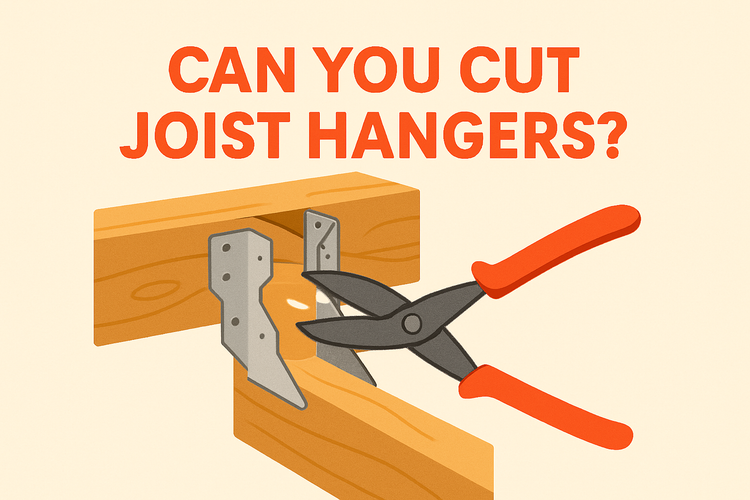Can You Cut Joist Hangers

Can You Cut Joist Hangers?
Yes, you can cut joist hangers, but there are important considerations to keep in mind. Modifying metal connectors can compromise their structural integrity and weaken their load-bearing capabilities.
Joist hangers are precision-engineered to support timber structures as part of a robust framing system. Altering them may void warranties or certifications and could even violate local building codes. Before attempting any modifications, consulting a structural engineer is highly recommended.
Why Modifying Joist Hangers Can Be Risky
Modifying joist hangers by cutting them can reduce their effectiveness, especially in load-bearing situations. These components are tested and designed to specific standards, which may be compromised when alterations are made.
If a joist hanger is trimmed improperly or cut in a way that affects its flanges or nail holes, it could result in structural instability. Real risks include sagging beams, failure under load, or compromised integrity during seismic or wind events. For safe alternatives, it's advisable to use a range of purpose-designed joist hangers suited to your specific connection needs.
Also, cutting galvanised steel impacts its resistance to corrosion. After modification, the exposed steel can oxidise and deteriorate much faster, leading to long-term maintenance issues. It's essential to re-coat or treat any exposed metal surfaces if a cut is absolutely necessary.
When Is It Acceptable to Cut a Joist Hanger?
In rare cases, minor alterations to a joist hanger may be warranted due to unique on-site conditions or fitting requirements. If cutting is necessary, only a small portion of a flange or edge should be trimmed—and only in non-load-bearing areas.
Before performing any modification, always consult with a structural engineer or adhere to manufacturer guidelines. Sometimes, an off-the-shelf solution from a specialised category like Timber Frame Connectors offers a better outcome without compromising safety.
Additionally, manufacturers may offer various shapes and sizes of joist hangers to accommodate irregular installations. Explore your options thoroughly before reaching for the angle grinder.
Tools and Techniques for Safe Modification
If you've determined that a cut is necessary and safe, using the right tools is crucial. A metal-cutting saw or an angle grinder fitted with a thin cut-off disc can provide clean cuts when used properly. Always wear safety equipment and take care to clamp the joist hanger securely during cutting.
After the cut, inspect the new edge for burrs or sharp points. Use a metal file or sandpaper to smooth the surface, and apply a self-etching primer followed by a rust-inhibiting paint to prevent corrosion. Precision and cleanliness are key to maintaining functionality.
Avoid drilling new holes, changing the shape of the load-bearing zones, or cutting across nail holes as these changes severely alter performance. It's often better to use alternate fixtures like Angle Brackets to make up for orientation issues or space constraints.
Alternatives to Cutting Joist Hangers
Rather than modifying joist hangers, consider finding a product that suits your needs without alterations. Modern construction offers a diverse selection of connectors, each engineered for unique conditions and framing arrangements.
The best plan is to use appropriate alternatives such as adjustable or skewed joist hangers, which are designed to accommodate non-standard framing angles. In many cases, brackets or specialised joist hangers provide the flexibility needed for your project.
Another viable option is to use layered structural components that allow shifting the position of the joist or beam to align with available connectors. Also, engineered timber connectors can offer tailored solutions that eliminate the need for modifications entirely. Making the right choice at the planning stage can save time, money, and structural headaches later on.
